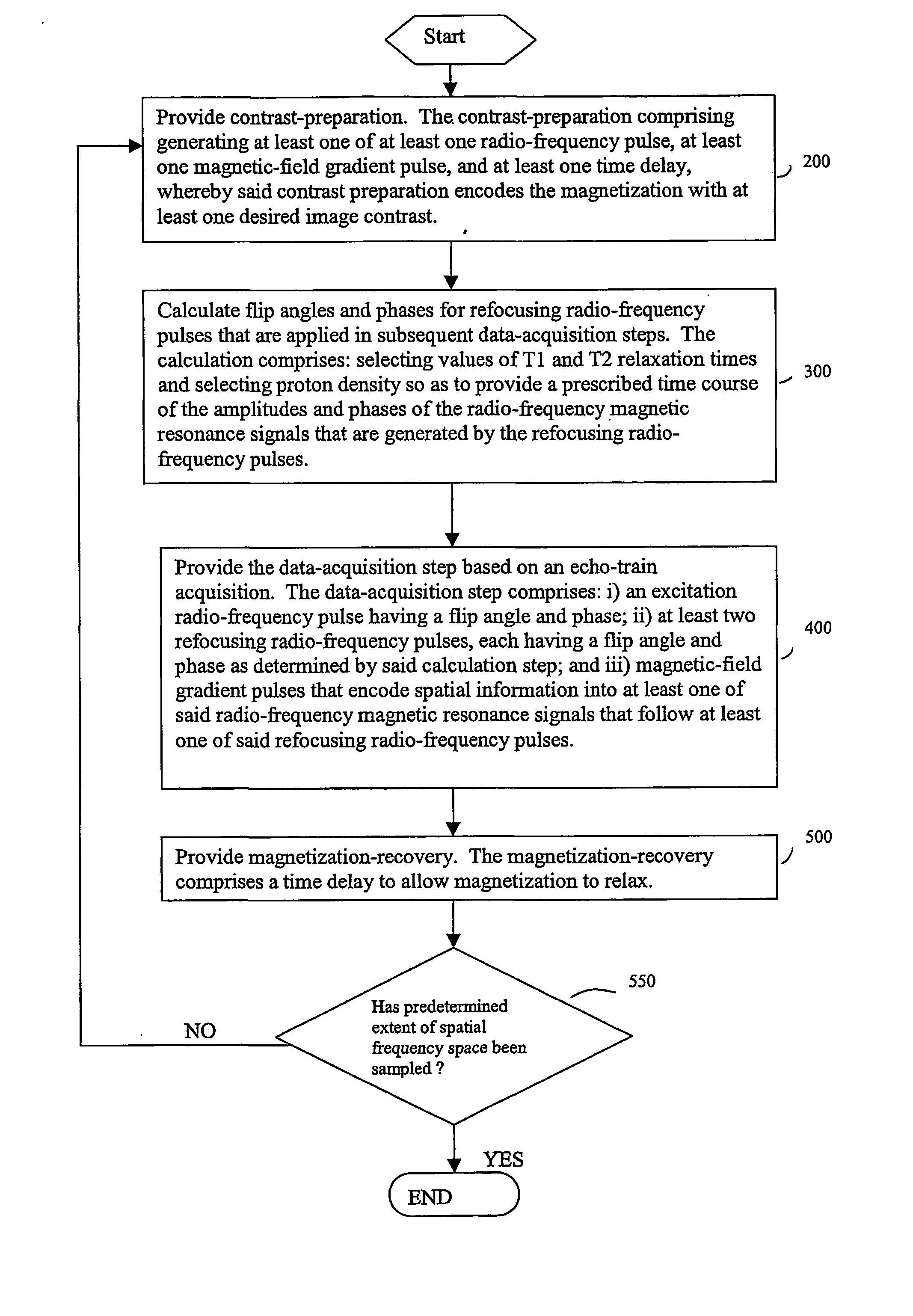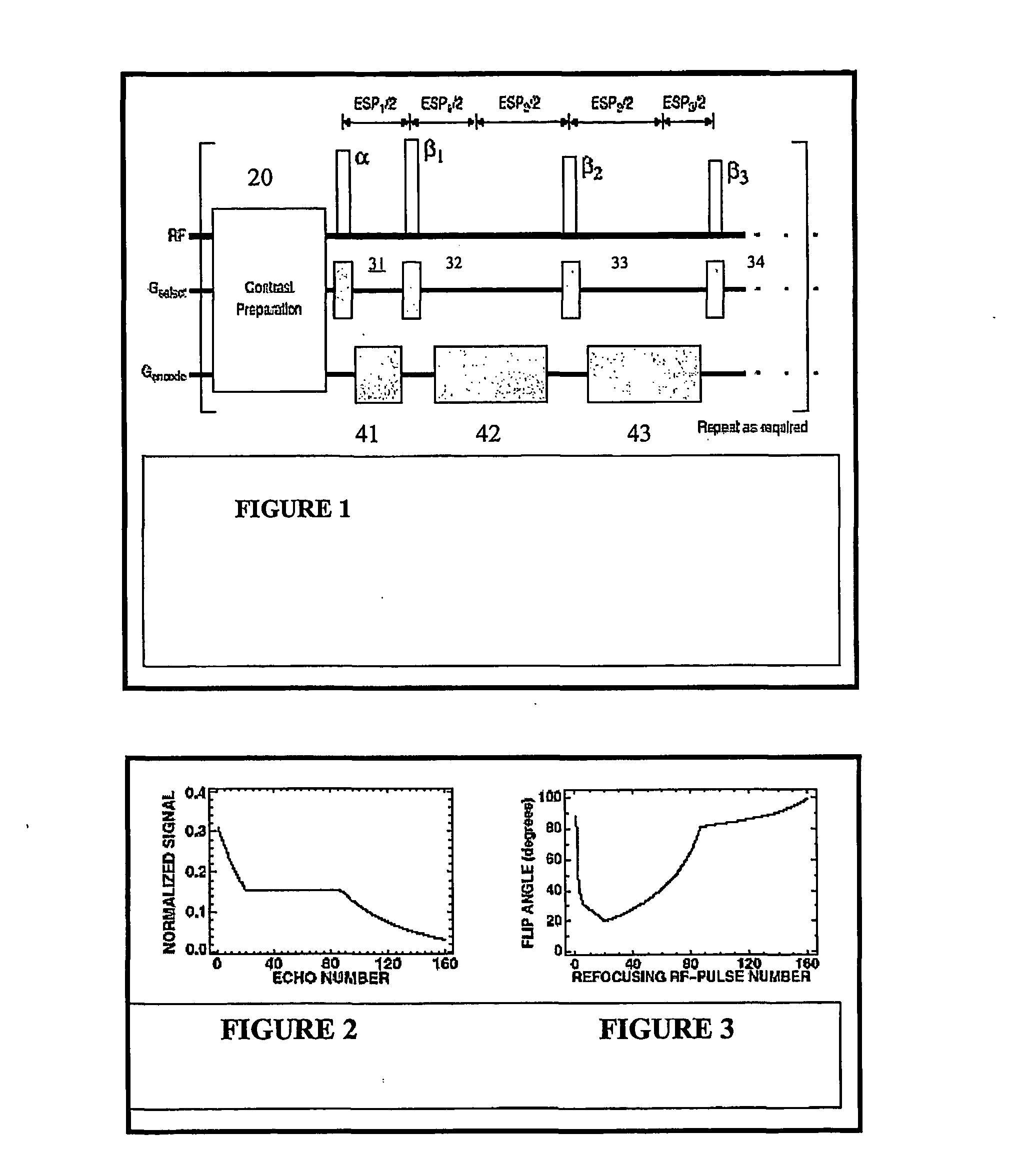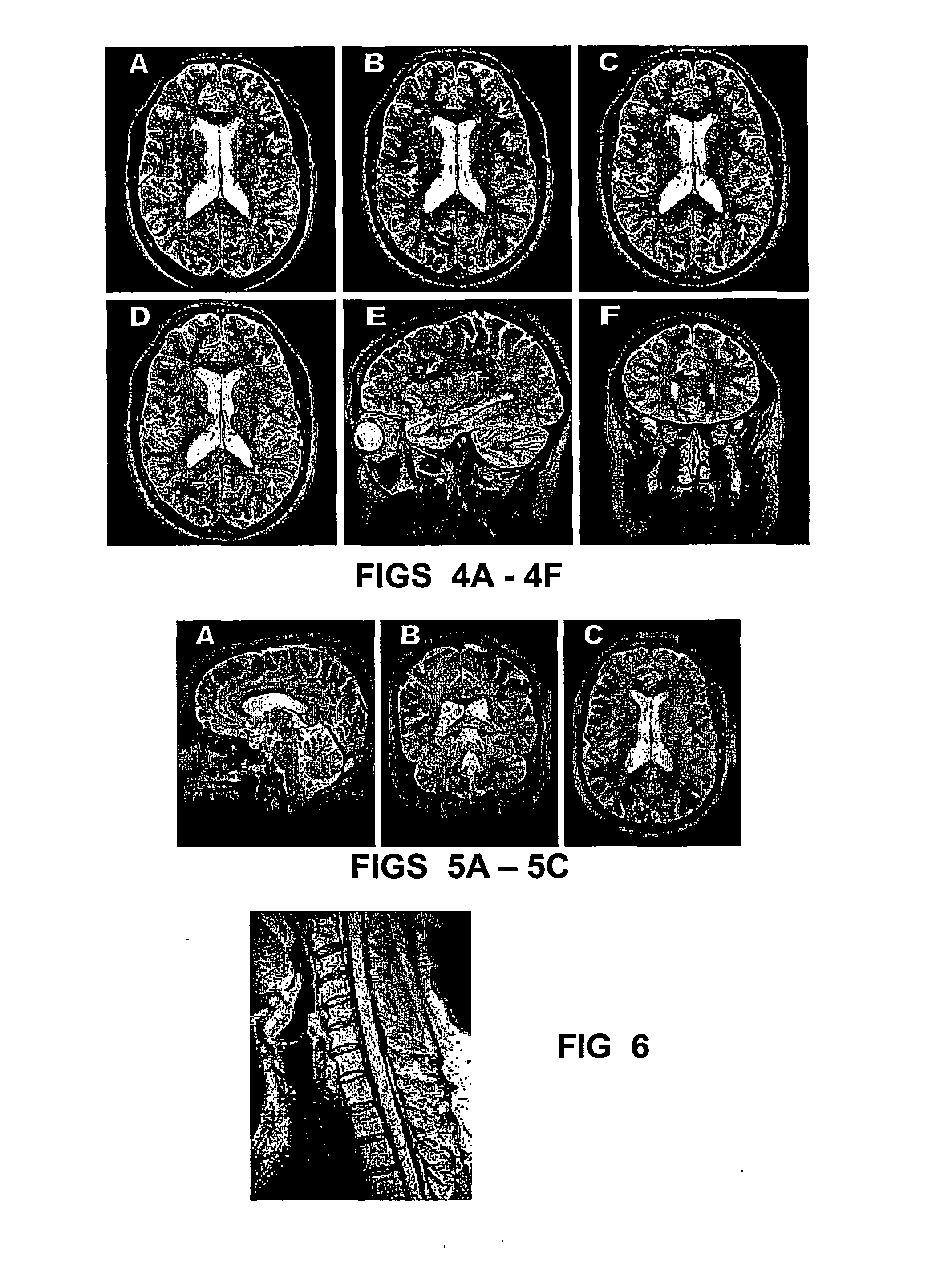Method and apparatus for spin-echo-train MR imaging using prescribed signal evolutions
a signal evolution and spinechotrain technology, applied in the direction of reradiation, measurement using nmr, instruments, etc., can solve the problems of not using all three of these linear gradients, introducing artifacts such as blurring, and substantially degrading image contras
- Summary
- Abstract
- Description
- Claims
- Application Information
AI Technical Summary
Problems solved by technology
Method used
Image
Examples
example no.1
Example No. 1
[0083] FIGS. 4B-4F show an example of MR brain images obtained at 1.5 Tesla using the variable-flip-angle series of FIG. 3 in a "turbo-SE" type spin-echo-train pulse sequence; collectively. In particular, the T2-weighted two-dimensional and three-dimensional SE images of FIGS. 4(A) and 4(B)-4(C), respectively, were obtained from a 59 year old volunteer for demonstrating age-related non-specific white-matter lesions. As can be observed, arrows mark several of these lesions. The adjacent 1-mm thick 3D images, as shown in FIGS. 4B-4D, correspond to the single 3-mm thick 2D image in FIG. 4A. In the 3D images, the phase-encoding direction corresponding to the 160-echo train is left-to-right in FIGS. 4B-4D and 4F. No image artifacts secondary to this very long spin-echo train are apparent. Pulse sequence parameters for the 10 minute 3D acquisition included the following: repetition time / effective echo time, 2750 / 328 ms; matrix, 256.times.160.times.216; field of view, 25.6.tim...
example no.2
Example No. 2
[0086] Next, referring to FIGS. 5A-5C, using the same pulse-sequence parameters as described above in FIGS. 2-4, T2-weighted images were also obtained at 3 Tesla from the brain of a healthy volunteer. The three 1-mm thick images were all reconstructed from the same 3D acquisition. These images appeared similar to those obtained at 1.5 Tesla, but exhibited higher signal-to-noise ratios. Of particular importance, the partial-body and local values for the specific absorption rate (SAR) were 1.29 W / kg and 3.16 W / kg, respectively, compared to the FDA limits for partial-body and local SAR of 3.0 and 8.0 W / kg, respectively. The SAR values at 3 Tesla were much less than the FDA limits, indicating that there remains substantial latitude in the pulse-sequence design from the perspective of power deposition, including the possibility for even more refocusing RF pulses per excitation. Thus, according to the present invention, although the use of spin-echo-train methods has been res...
example no.3
Example No. 3
[0087] Referring to FIG. 6, as the final example, FIG. 6 shows a T2-weighted sagittal image of the cervical spinal cord obtained at 1.5 Tesla from a healthy volunteer, again using a 160-echo train. The quality of cervical-spine images from T2-weighted MRI techniques is often compromised by artifacts arising from the pulsatile motion of the CSF surrounding the cord. One potential solution to this problem is to use FLAIR imaging. See Hajnal et al. While this technique can completely suppress the signal from CSF, there remains some concern about its ability to depict the full range of clinically-relevant lesions. See Hittmair et al. and Keiper et al. As illustrated in FIG. 6, an alternative is to use a T2-weighted technique with a very long spin-echo train based on a prescribed signal evolution, as provided by the present invention. The signal from CSF is uniformly suppressed without generating motion artifacts. The combination of the long echo train and the relatively low...
PUM
 Login to View More
Login to View More Abstract
Description
Claims
Application Information
 Login to View More
Login to View More - R&D
- Intellectual Property
- Life Sciences
- Materials
- Tech Scout
- Unparalleled Data Quality
- Higher Quality Content
- 60% Fewer Hallucinations
Browse by: Latest US Patents, China's latest patents, Technical Efficacy Thesaurus, Application Domain, Technology Topic, Popular Technical Reports.
© 2025 PatSnap. All rights reserved.Legal|Privacy policy|Modern Slavery Act Transparency Statement|Sitemap|About US| Contact US: help@patsnap.com



